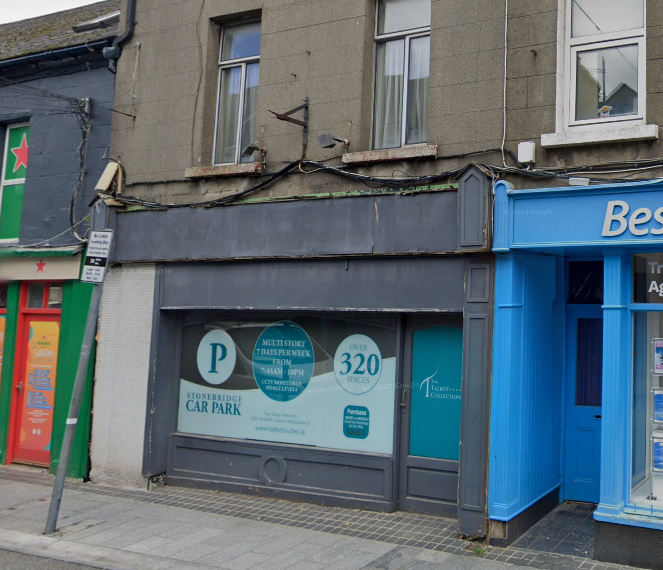The Stagnant Transformation: Addressing The Issues Hindering Conversions Of Vacant Commercial Properties In The Netherlands

Table of Contents
Bureaucracy and Planning Permission Delays
The Dutch planning system, while thorough, can be a significant barrier to the conversion of vacant commercial properties. Navigating the complex regulations often leads to frustrating delays, deterring developers and hindering progress.
Navigating Complex Regulations
The process of obtaining planning permission for repurposing commercial spaces can be lengthy and complicated.
- Lengthy application processes: The sheer volume of paperwork and the multiple stages involved in securing approvals contribute to substantial delays.
- Strict building codes and environmental regulations: While crucial for ensuring safety and sustainability, these regulations can add complexity and cost to conversion projects. Compliance with energy efficiency standards, for example, requires careful planning and may necessitate significant investments.
- Lack of clarity in zoning regulations for adaptive reuse: Ambiguous zoning regulations can make it difficult for developers to determine the permissible uses for a given property, leading to uncertainty and delays.
Streamlining the Approval Process
Several measures can be implemented to accelerate the approval process and make it more developer-friendly.
- Implementing fast-track approvals for specific conversion projects: Prioritizing projects that align with national urban development strategies or those demonstrating clear economic benefits could expedite approvals.
- Creating a single point of contact for developers: A dedicated liaison within the municipal government could simplify communication and streamline the application process, reducing bureaucratic bottlenecks.
- Investing in digital planning tools and platforms: Modernizing the planning system through digitalization could significantly reduce processing times and improve transparency. Online portals and automated systems could make the entire process more efficient.
Financial Barriers and Investment
High conversion costs and a lack of readily available financing represent significant hurdles in repurposing vacant commercial properties in the Netherlands.
High Conversion Costs
Renovating older commercial buildings often requires substantial financial investment.
- Lack of affordable financing options specifically designed for conversion projects: Traditional lending institutions may be hesitant to finance these projects due to perceived risks, leaving developers struggling to secure adequate funding.
- Uncertainty around potential return on investment due to market fluctuations: The unpredictable nature of the real estate market can make it challenging to predict the profitability of conversion projects, discouraging potential investors. This is particularly true for large-scale renovations of older buildings. Thorough market research and risk assessment become crucial.
Attracting Investors
Incentivizing investment is vital to stimulate the conversion of vacant commercial space.
- Government-backed loan programs for commercial property conversions: Low-interest loans or loan guarantees could make conversion projects more financially viable.
- Tax incentives for developers committing to sustainable renovations: Offering tax breaks for developers incorporating green technologies and sustainable building materials would encourage environmentally friendly conversions.
- Public awareness campaigns highlighting the potential of repurposed spaces: Showcasing successful conversion projects and the economic benefits they generate could attract investors and demonstrate the potential of this market.
Market Demand and Adaptive Reuse Challenges
Successfully converting vacant commercial properties hinges on a thorough understanding of market demands and the creative adaptation of existing spaces.
Understanding Market Needs
Identifying the optimal end-use for vacant buildings is crucial.
- Conducting thorough market research to identify suitable alternative uses (e.g., residential, co-working spaces, cultural centers): A deep dive into local demographics and economic trends can inform the best repurposing strategy.
- Analyzing demographics and local economic trends to inform conversion strategies: Understanding current and future market needs ensures the viability of conversion projects, maximizing their chances of success and minimizing risk.
Adapting Spaces for Modern Needs
Older commercial buildings may require significant modifications to meet contemporary needs.
- Strategies for incorporating sustainable and energy-efficient designs: Modernization requires integrating energy-efficient technologies and sustainable building materials. This adds to the appeal of the converted property but also increases costs.
- Highlighting the benefits of repurposed spaces (e.g., character, location, sustainability): Marketing the unique aspects of converted spaces—such as their historical character, prime location, or sustainable features—can attract businesses and residents.
Conclusion
The conversion of vacant commercial properties in the Netherlands presents a significant opportunity to boost economic activity and enhance urban environments. However, overcoming the hurdles of bureaucracy, securing adequate financing, and aligning conversion projects with market demands are crucial for success. By addressing these issues through streamlined regulations, attractive financial incentives, and innovative adaptive reuse strategies, the Netherlands can unlock the considerable potential of its vacant commercial properties and foster a more vibrant and prosperous future. Let's work together to overcome the challenges and achieve a successful transformation of these vacant commercial properties in the Netherlands. Contact us today to learn more about available resources and support for your conversion project.

Featured Posts
-
 Indiana Pacers Beat Brooklyn Nets Mathurin Scores 28
May 28, 2025
Indiana Pacers Beat Brooklyn Nets Mathurin Scores 28
May 28, 2025 -
 Alcarazs Italian Open Victory Ending Sinners Dominance
May 28, 2025
Alcarazs Italian Open Victory Ending Sinners Dominance
May 28, 2025 -
 Adanali Ronaldodan Ronaldonun Cok Cirkinsin Demesine Cevap
May 28, 2025
Adanali Ronaldodan Ronaldonun Cok Cirkinsin Demesine Cevap
May 28, 2025 -
 Hugh Jackman And Deborra Lee Furness Finalize Divorce Following Two Year Separation
May 28, 2025
Hugh Jackman And Deborra Lee Furness Finalize Divorce Following Two Year Separation
May 28, 2025 -
 Padres And Dodgers Extend Winning Streaks Nl West Report
May 28, 2025
Padres And Dodgers Extend Winning Streaks Nl West Report
May 28, 2025
